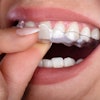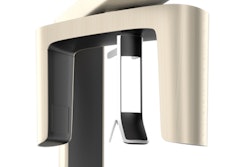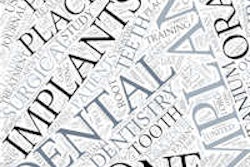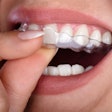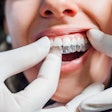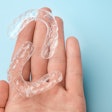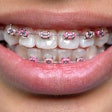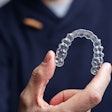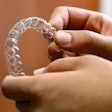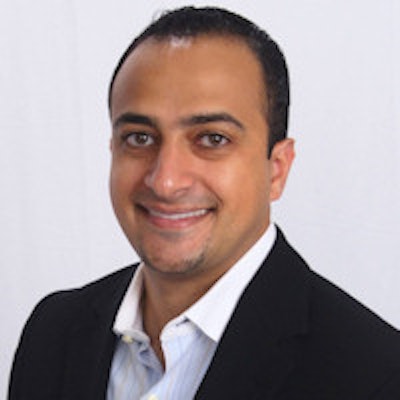
An issue that my orthodontic patients often wrestle with is the process of creating impressions. Some patients fear goopy impressions that are messy and uncomfortable. And if the first impression is not clinically acceptable, the process has to be repeated, creating a disappointing experience for the patient.
With the evolution of the digital workflow, we can now offer comfortable, painless impressions for our orthodontic patients. The digital workflow makes this process a breeze and has significantly increased our orthodontic case acceptance.
Technology advances
 Meena Barsoum, DMD.
Meena Barsoum, DMD.The technology and software have evolved over the years. Software specifically designed for full-arch impressioning has been introduced (Cerec Ortho, Sirona). This software allows clinicians to capture highly accurate full-arch scans to use for various orthodontic and removable appliance therapy. The software relies on a guided scanning protocol, allowing the user to capture the full-arch impression.
Starting with the lower jaw, each quadrant is imaged in four simple steps (lingual, occlusal, and buccal scans, followed by a transverse scan). The entire process can be completed in less than 10 minutes in my experience.
Scans can now be uploaded to various third-party laboratories. Clinicians can submit these scans for many different appliances, such as occlusal guards, orthodontic retainers, palatal expanders, sleep appliances, lingual brackets, and more. The scans can also be exported to in-office 3D printers for model printing and archival. There are even labs that can fabricate orthodontic bracket placement templates to aid in their bonding. In my practice, we work with Great Lakes Orthodontics to fabricate occlusal splints, retainers, and sleep appliances using the digital scan.
“By far the most important introduction has been the direct upload connection to clear aligner manufacturers.”
By far the most important introduction has been the direct upload connection to clear aligner manufacturers such as ClearCorrect and Invisalign. Clinicians can now capture a full-mouth digital impression and submit directly to these companies through a unique portal.
Once they receive the digital impression, it is converted and linked to the clinicians' account. A case submission is begun and a prescription filled out for the aligner therapy that is desired. Being a fully digital process, this can happen very quickly, sometimes in as little as a few hours. Within a couple of days, a treatment setup is prepared and sent to the clinician for evaluation and approval.
Once the treatment setup is approved, aligners are shipped to the clinician and the case is started. Aligners that fit well will perform well and, therefore, improve the case outcome and potentially reduce time-consuming refinements for the patient.
From a patient perspective, the digital workflow is comfortable, fast, and accurate. Case acceptance has increased significantly, with more and more patients opting for clear aligner therapy. As a practice owner, saving money on expensive polyvinyl siloxane (PVS) impression material has been a huge benefit.
Meena Barsoum, DMD, is a general and cosmetic dentist practicing in Arlington Heights, IL. Visit his Impressive Smiles practice website.
The comments and observations expressed herein do not necessarily reflect the opinions of DrBicuspid.com, nor should they be construed as an endorsement or admonishment of any particular idea, vendor, or organization.
